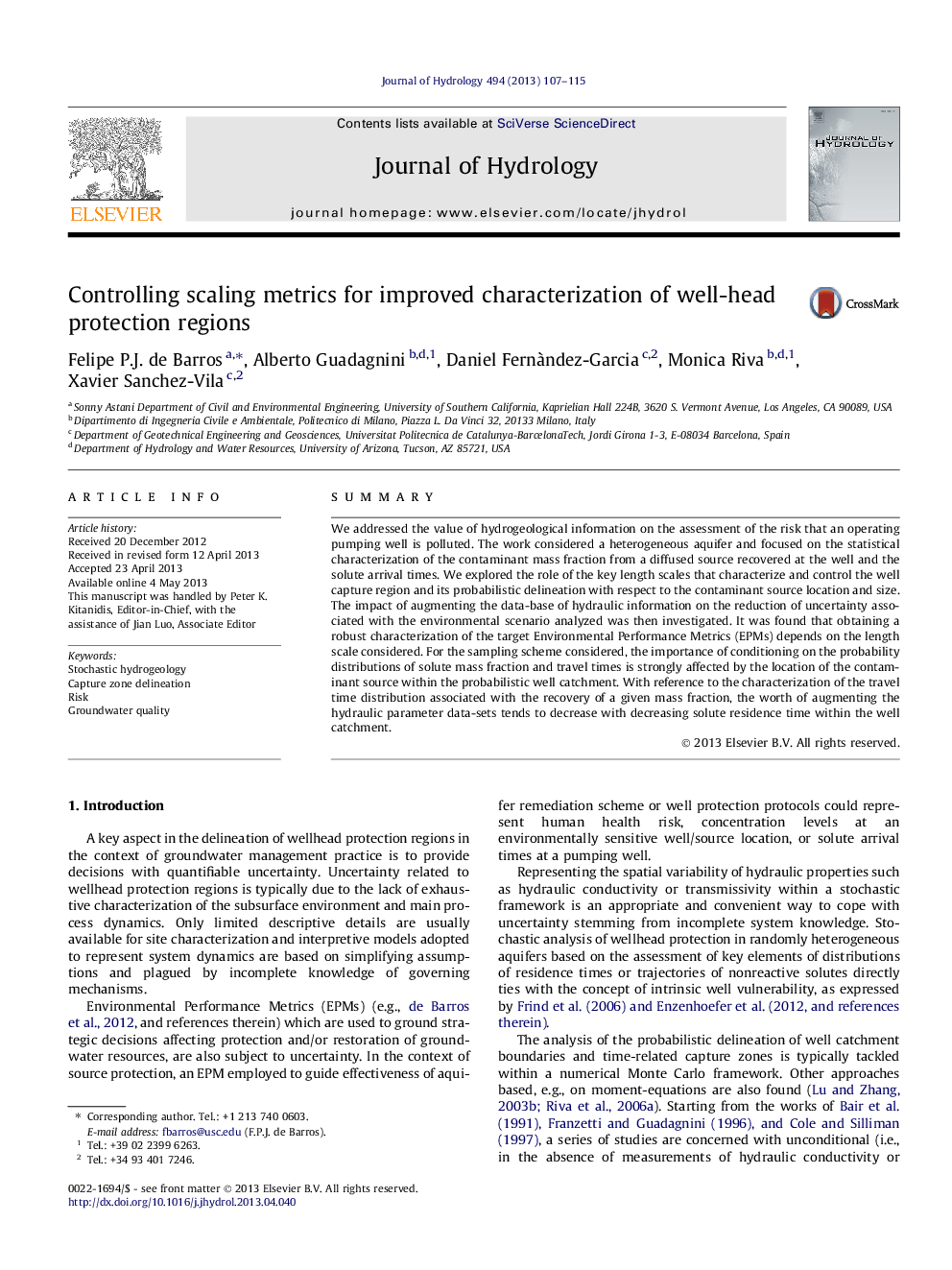| Article ID | Journal | Published Year | Pages | File Type |
|---|---|---|---|---|
| 6413763 | Journal of Hydrology | 2013 | 9 Pages |
â¢Model the value of hydrogeological information on risk.â¢Analyze the role of the key length scales in characterizing the well region.â¢Statistically characterize model predictions in the presence of a pumping well.
SummaryWe addressed the value of hydrogeological information on the assessment of the risk that an operating pumping well is polluted. The work considered a heterogeneous aquifer and focused on the statistical characterization of the contaminant mass fraction from a diffused source recovered at the well and the solute arrival times. We explored the role of the key length scales that characterize and control the well capture region and its probabilistic delineation with respect to the contaminant source location and size. The impact of augmenting the data-base of hydraulic information on the reduction of uncertainty associated with the environmental scenario analyzed was then investigated. It was found that obtaining a robust characterization of the target Environmental Performance Metrics (EPMs) depends on the length scale considered. For the sampling scheme considered, the importance of conditioning on the probability distributions of solute mass fraction and travel times is strongly affected by the location of the contaminant source within the probabilistic well catchment. With reference to the characterization of the travel time distribution associated with the recovery of a given mass fraction, the worth of augmenting the hydraulic parameter data-sets tends to decrease with decreasing solute residence time within the well catchment.
